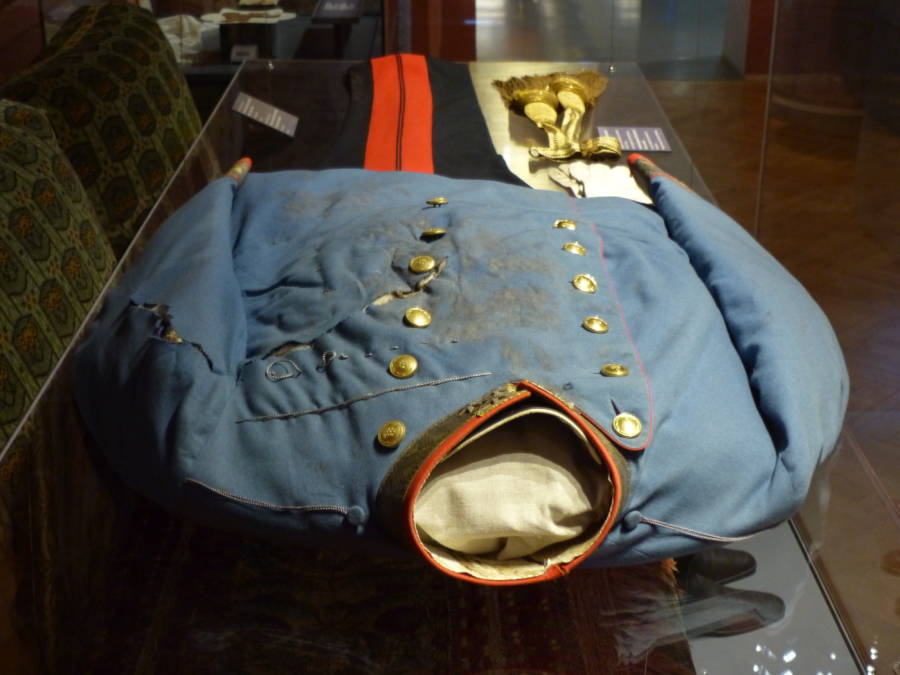
The Anti-Climactic Assassination Attempt Arrest of a suspect after the assassination. However, even among the fiercely nationalist members of the Black Hand, many became communists after the World War had ended and thus also sworn enemies of the Serb-led regime of the newly-unified South Slavic state, known as the Kingdom of Serbs, Croats, and Slovenes. This is because the question of their (non-)involvement also concerns the burden of “war guilt” and whether it lay on the Entente or the Central Powers. Its connections to Young Bosnia and the assassination of Franz Ferdinand are still hotly debated by historians. However, perhaps the most mysterious of all was the ominously named Black Hand, which sought South Slav unity but was closely tied to the Serbian government. All of these conspiratorial organizations would go on to play an important role in twentieth-century politics in the Balkans.

One Croatian participant in these movements who, like most of them, eventually became a communist, later described these groups as “half national revolutionary and half anarchist in character.”Īssassination of Archduke Franz Ferdinand of Austria by Achille Beltrame, illustration for the newspaper La Domenica del Corriere, July 12th, 1914, via HistoryĪside from the Croat national revolutionaries and Young Bosnia, a prominent example was the Internal Macedonian Revolutionary Organization (IMRO), closely connected to the Bulgarian Marxists and significant in the process of Macedonian nation-building. They were aimed against the existing feudal order in Europe and wanted to accomplish both social and national liberation. Young Bosnia was part of a broader Eastern European trend of the day, where the radicalized youth began forming organizations that were simultaneously left-wing and nationalist. Please check your inbox to activate your subscription Thank you! The distinction between pan-Serbianism and Yugoslavism was unclear to many and often considered synonymous, at least by the Serbs, if not the Croats and Bosnians. A young Balkan state inspired by ideas of 19th-century nationalism, Serbia had sought to expand its holdings onto territories populated not only by ethnic Serbs but by all other South Slavs, primarily Croats and Bosnian Muslims. In 1908, Austria-Hungary formally annexed Bosnia, nearly prompting a war with Serbia. Previously controlled by the Ottoman Empire, Bosnia had been under Habsburg rule since 1878, when the Congress of Berlin confirmed its control over the region in the aftermath of the Russo-Turkish War of 1877–78.

Gavrilo Princip was a Bosnian Serb by origin and a member of a terrorist organization called Young Bosnia, whose goal was the unification of South Slavs and the liberation of Bosnia and Herzegovina from the Austro-Hungarian occupation. Who Were the Conspirators? North Camp near Mostar during the Bosnian campaign of 1878 by Alexander Ritter von Bensa the Younger and Adolf Obermüller, via Nevertheless, his accidental placement on the corner across from Sarajevo’s famous Latin Bridge would prove to be decisive, and the real story is as exciting as the apocryphal one. His whereabouts seem to have been more of a product of commotion following an unsuccessful assassination attempt.

However, he was not there to eat a sandwich. Princip did, in fact, murder Franz Ferdinand on the corner in front of Moritz Schiller’s Delicatessen, and the building has since been converted into the Museum of Sarajevo 1878–1918. The problem with this story is that, although captivating, it is simply not true.
Serbian nationalist who assassinated franz ferdinand series#
This story has been repeated endlessly in media and has even made it to an episode of the famous thriller series Fargo. As the story goes, just as he walked into Sarajevo’s famed Moritz Schiller’s Delicatessen for a snack, he saw the motorcade driving by, came out, and started shooting. You may have heard the story of Gavrilo Princip and the sandwich – a fable according to which Princip went to get a sandwich following the failure of the first conspirator to murder the Habsburg Archduke. There Was No Sandwich For Gavrilo Princip The Latin Bridge and the Museum of Sarajevo 1878–1918, located on the site of the former Schiller’s Delicatessen, via Travel Sarajevo


 0 kommentar(er)
0 kommentar(er)
